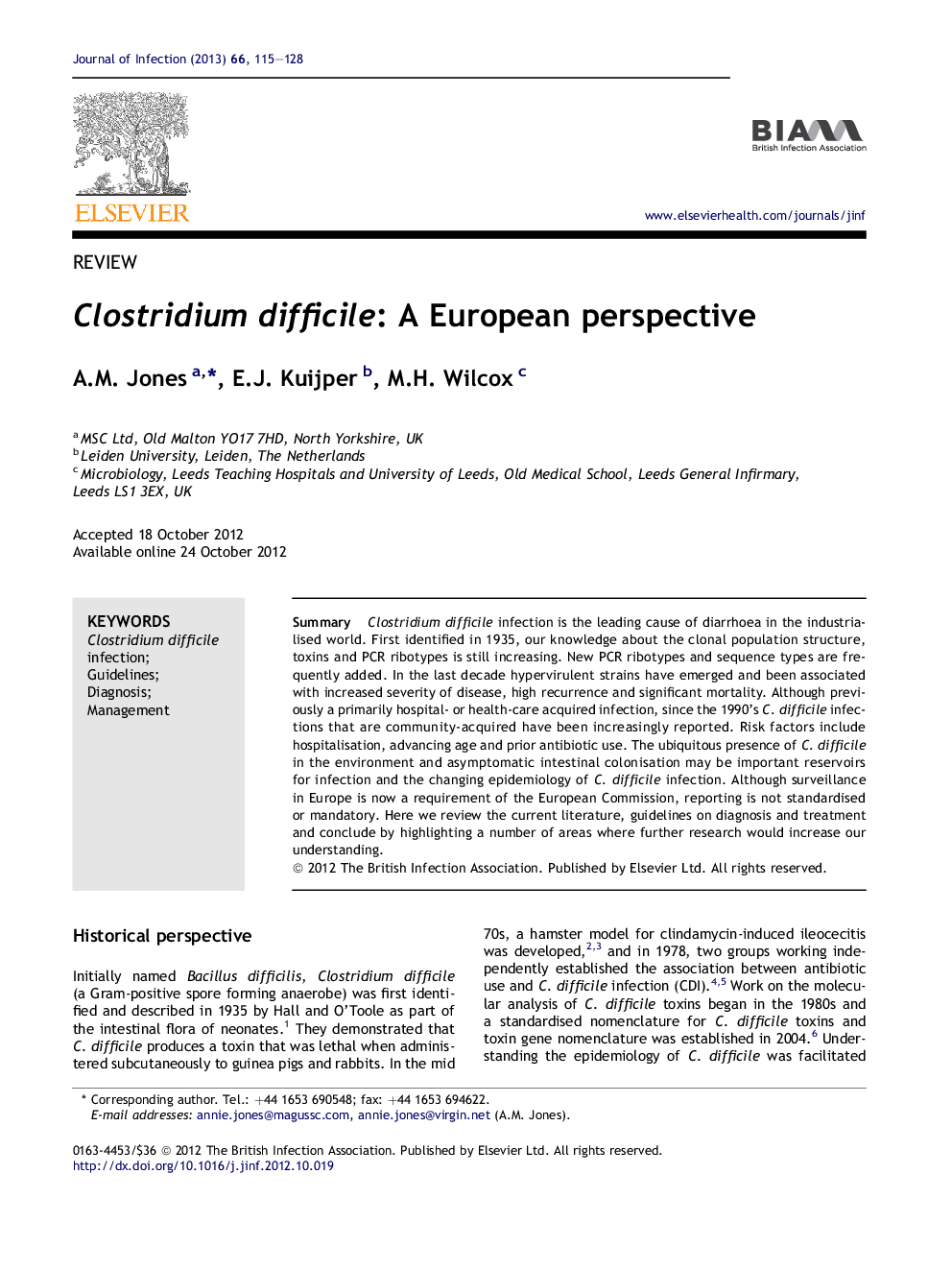| Article ID | Journal | Published Year | Pages | File Type |
|---|---|---|---|---|
| 3374825 | Journal of Infection | 2013 | 14 Pages |
SummaryClostridium difficile infection is the leading cause of diarrhoea in the industrialised world. First identified in 1935, our knowledge about the clonal population structure, toxins and PCR ribotypes is still increasing. New PCR ribotypes and sequence types are frequently added. In the last decade hypervirulent strains have emerged and been associated with increased severity of disease, high recurrence and significant mortality. Although previously a primarily hospital- or health-care acquired infection, since the 1990's C. difficile infections that are community-acquired have been increasingly reported. Risk factors include hospitalisation, advancing age and prior antibiotic use. The ubiquitous presence of C. difficile in the environment and asymptomatic intestinal colonisation may be important reservoirs for infection and the changing epidemiology of C. difficile infection. Although surveillance in Europe is now a requirement of the European Commission, reporting is not standardised or mandatory. Here we review the current literature, guidelines on diagnosis and treatment and conclude by highlighting a number of areas where further research would increase our understanding.
